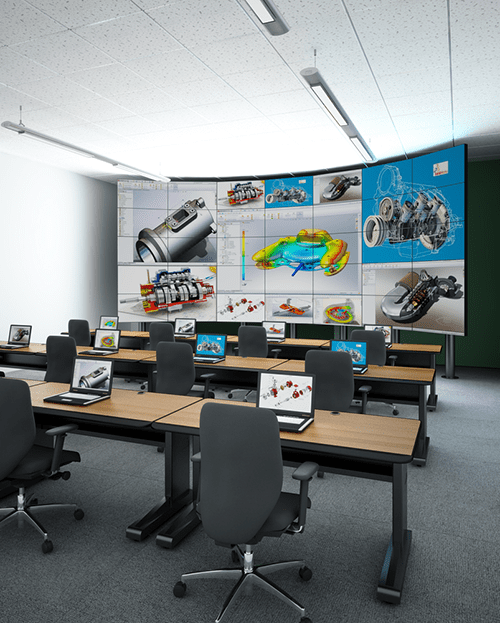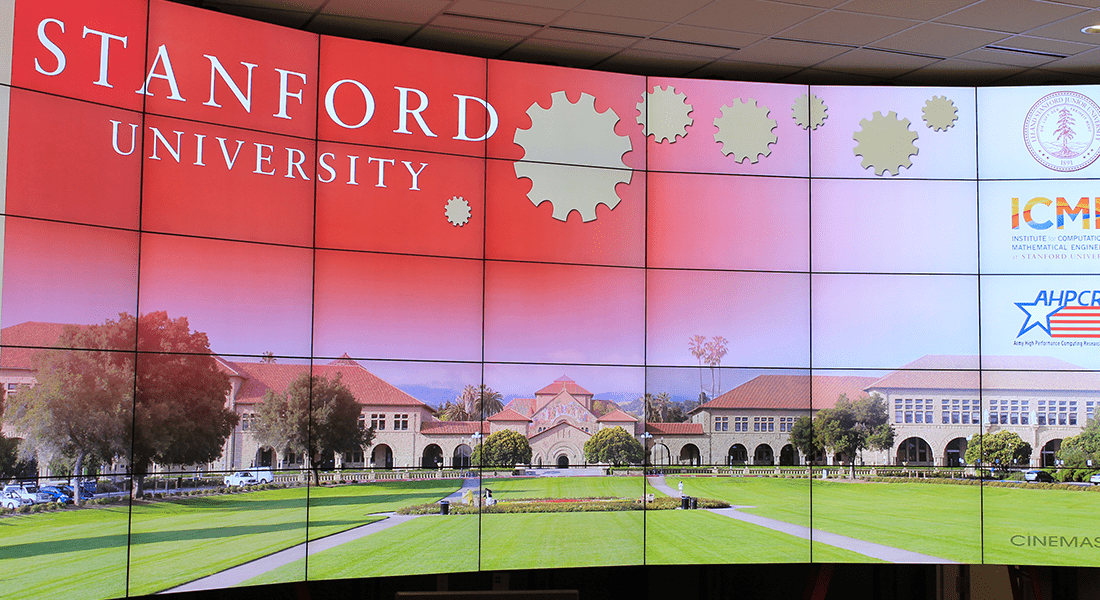- Education & Interactive Learning
A Haivision video wall system helped Georgia State University Library create an immersive, interactive visualization center that transformed the learning experience.
Introducing Haivision Command 360 Platform – the most powerful video wall software for situational awareness and real-time decision-making for mission-critical environments around the world. You’ll gain unmatched, centralized control of your operations with access to more features, streamlined workflows, and the most advanced user interface for tailoring the system to meet your unique requirements. Get started right away without custom programming or extensive training.
Stanford’s immersive visualization environment
Home | Case Studies | Stanford University HIVE
As the lead organization for the Army High Performance Computational Research Center Consortium (AHPCRC), Stanford University’s Institute for Computational and Mathematical Engineering (ICME) works in conjunction with the Army Research Laboratory on research in the field of Computation-Based Engineering Science, with an emphasis on solutions relevant to the needs of the U.S. Army. In this role, Stanford conducts research across the sciences to produce cutting-edge software and computational methodologies for high-performance computing environments.
Stanford’s research frequently requires the examination of high-resolution data sets, 3D renderings, and simulations. Until recently, the university had been accessing this data through a number of individual workstations. The workstations could not display the large-scale content at full resolution, forcing researchers to view limited sections of data at a time and creating a fragmented view that inhibited collaboration.
To create a more cohesive, collaborative research environment, Stanford began planning the HANA Immersive Visualization Environment, or HIVE – a space where researchers could render and display their data on a high-resolution video wall system. The system would need to display Stanford’s cluster of 30 Linux-based PCs at native resolution and allow researchers working at different workstations to push content to the video wall.
After researching a number of options, Stanford chose Haivision to implement the HIVE’s video wall system. Haivision was selected because as both manufacturer and integrator, it was uniquely equipped to provide a fully-integrated custom solution.
Haivision created a high-performance visualization solution tailored to the needs of Stanford’s research programs.
For the video wall canvas, Haivision provided a curved CineView LCD video wall composed of a 7×5 array of 55″ displays. The CineView wall’s curved structure allowed room for an additional column of displays, creating a multi-HD display canvas that could fully accommodate the cluster of Linux PCs. The CineView LCD displays delivered a bright, crisp image and a wide viewing angle.
To connect Stanford’s content sources to the video wall, Haivision provided the Alpha video wall processor. The Alpha captured signals from the cluster of Linux PCs, allowing users to push the content to the displays and control it in real-time. The Bravo Viz, an ultra-high-resolution content rendering engine integrated with the Alpha, further enhancing the visualization experience. Rendering Stanford’s large-scale models, video, and data at native resolution, the Bravo Viz enabled content that was previously segmented across multiple workstations to be visualized at full scale and detail for the first time.
To control the visualization system, Haivision provided CineNet software. CineNet allowed researchers to dynamically arrange and manipulate content displayed on the video wall. Features such as drag-and-drop content placement, zooming and cropping, and customizable content layouts provided researchers with a user-friendly toolkit for collaborative exploration.
For streamlined control of the system, Haivision provided its Touch Control software interface. With Touch Control, users could control and automate both the video wall and other integrated systems like lights and room temperature – all at the touch of a finger.
By leveraging Haivision video wall technology, Stanford transformed once-fractured data and images into fully-realized content on an interactive platform. The visualization system facilitated cross-departmental collaboration and provided researchers with the tools they needed to share and explore new innovations.


By using their Haivision video wall system to visualize and manage their critical data, the Remote Operations Team is able to work efficiently and effectively to support Apex’s clean energy assets.
Pleased with the outcome of the project, David Grant observes that the video wall system is not just visually impressive, but also genuinely useful to the team. “The data you see on the screens is a truly functional view,” he explains. “Every single thing on the video wall adds value.”
Looking to the future, David is also happy to have implemented a visualization system that can scale and develop along with the organization itself. “As Apex continues to acquire new assets and grow as an organization, the Haivision system gives us the flexibility to evolve and expand the information we’re visualizing,” he says.
Stanford News, Stanford opens state-of-the-art facility for collaborative scientific visualization
Stanford Resources, HIVE
Haivision News